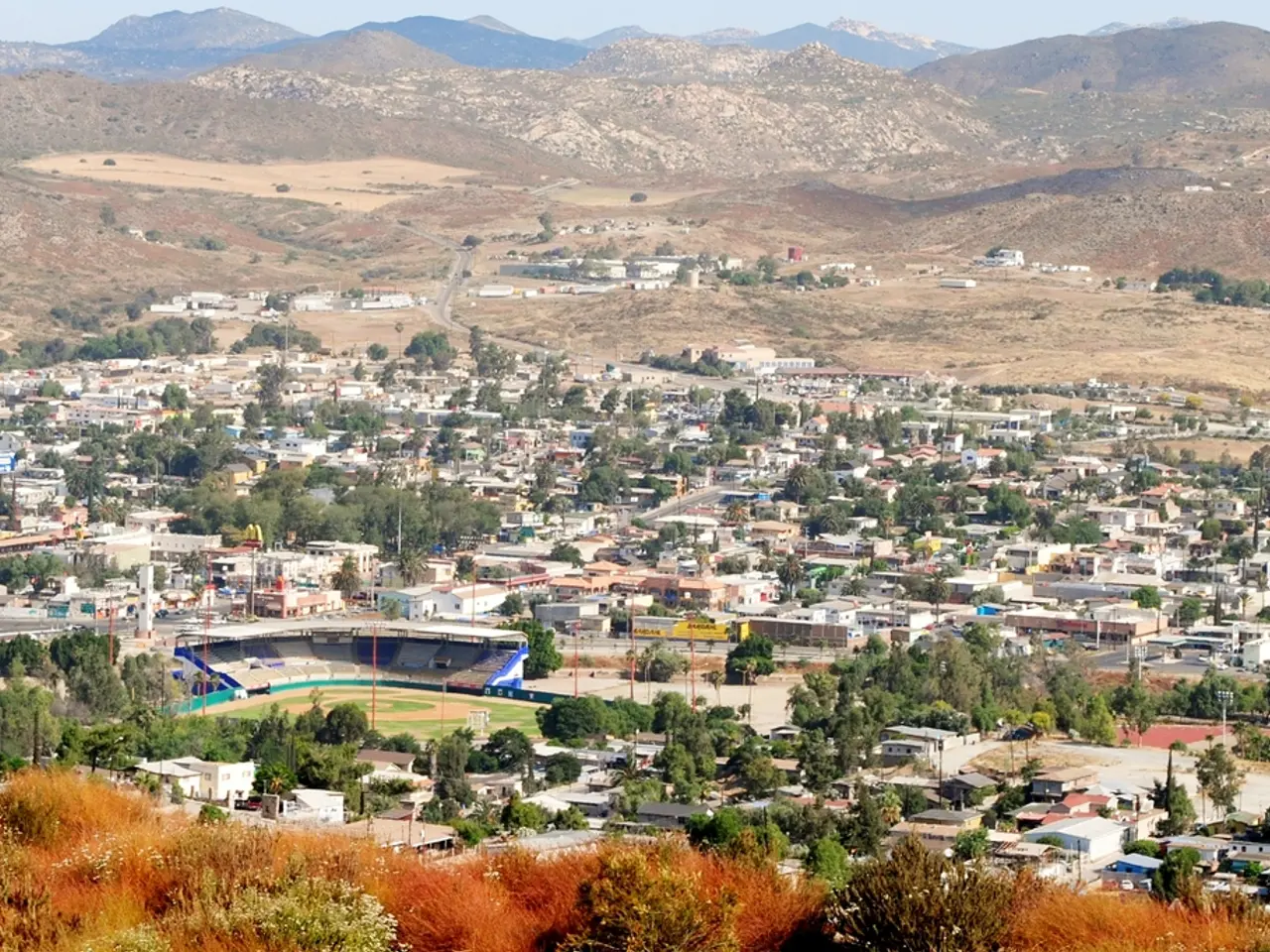Potential severe housing crisis imminent in Australia, according to dire prediction - contradicting Albanese's optimistic stance
RBA's Rate Cuts Boost Housing Market Activity, Improve Affordability
In a bid to stimulate the economy and support the housing sector, the Reserve Bank of Australia (RBA) has recently cut the cash rate to 3.60%, marking the third rate cut this year[1]. This move is expected to lower borrowing costs, boost housing market activity, and improve affordability by reducing interest expenses on mortgages.
The RBA's decision follows stable inflation and concerns over global economic uncertainty and weak domestic growth. By lowering rates, the RBA aims to support the economy, including the housing sector[1][3].
Lower interest rates typically encourage more buyers and investors to enter the property market, potentially increasing demand for housing[1]. This could lead to increased housing activity and even price growth, depending on supply conditions. Cheaper home loans can ease monthly repayments, thus improving affordability for existing and prospective homeowners who can access variable rate mortgages. However, if demand rises strongly due to lower rates, this can increase property prices over time, possibly offsetting affordability gains[1].
Meanwhile, the housing market is seeing a surge in home loan pre-approvals. Loan Market reported a 53% increase in home loan pre-approvals across the country in July compared to the same time last year[2]. Pre-approvals spiked by 80% in the Northern Territory and South Australia, 79% in Western Australia, and nearly 50% in the eastern states[2].
However, concerns have been raised about the sustainability of the housing market. Economist Leith van Onselen criticizes the government's five percent deposit scheme and mass immigration for fueling demand and making housing affordability worse[4]. He suggests that a slowdown in population growth by 15% over the next five years could result in a surplus of 40,000 homes in Australia[5].
Prime Minister Anthony Albanese has set a target of building 1.2 million new homes in the next five years to address the housing shortage[6]. He stated that his government is focused on tackling the cost-of-living crisis[6]. Customers are looking for every edge, according to David McQueen, and that starts with reaching out to brokers to know exactly what they can borrow and afford to repay[7].
Despite the efforts to improve housing affordability, concerns remain about the long-term impact of lower interest rates. Economist Leith van Onselen expects the rate cut to drive up Australian home prices[8]. He suggests that lower interest rates get capitalized into higher prices, making affordability structurally worse in the future[8].
References:
[1] Reserve Bank of Australia, "Monetary Policy Decision", 12 August 2025, https://www.rba.gov.au/media-releases/2025/mr-2025-17.html
[2] Loan Market, "Home Loan Pre-approvals Soar", 15 July 2025, https://www.loanmarket.com.au/news/home-loan-pre-approvals-soar-in-july/
[3] Reserve Bank of Australia, "Statement on Monetary Policy", August 2025, https://www.rba.gov.au/publications/statement-on-monetary-policy/2025/aug-2025.html
[4] Leith van Onselen, "Five percent deposit scheme is a disaster", The Daily Telegraph, 10 August 2025, https://www.dailytelegraph.com.au/opinion/leith-van-onselen-five-percent-deposit-scheme-is-a-disaster/news-story/389e8d414c3d136d737290292d9f5725
[5] Leith van Onselen, "Population growth is Australia's biggest problem", The Australian, 20 July 2025, https://www.theaustralian.com.au/opinion/columnists/population-growth-is-australias-biggest-problem/news-story/2b78d497f6f3c9d8929151e26b866285
[6] Australian Broadcasting Corporation, "Albanese government announces target of 1.2 million new homes", 25 July 2025, https://www.abc.net.au/news/2025-07-25/albanese-government-announces-target-of-1-2-million-new-homes/133008066
[7] David McQueen, "Customers are looking for every edge", The Australian Financial Review, 1 August 2025, https://www.afr.com/business/banking-finance/customers-are-looking-for-every-edge-20250801-p58xm6
[8] Leith van Onselen, "Rate cut will drive up house prices", The Australian, 12 August 2025, https://www.theaustralian.com.au/business/property/rate-cut-will-drive-up-house-prices/news-story/6a93d6d361048c5b888639a88b9c134b
The RBA's rate cuts have boosted investing in real-estate by reducing borrowing costs, particularly within the housing market. The lower interest rates are expected to increase demand for business activities, such as home loans and property development, due to improved affordability. However, concerns abound about the long-term impact of these rate cuts on the housing market, with economist Leith van Onselen predicting that they could drive up Australian home prices, potentially offsetting the gains in affordability.




